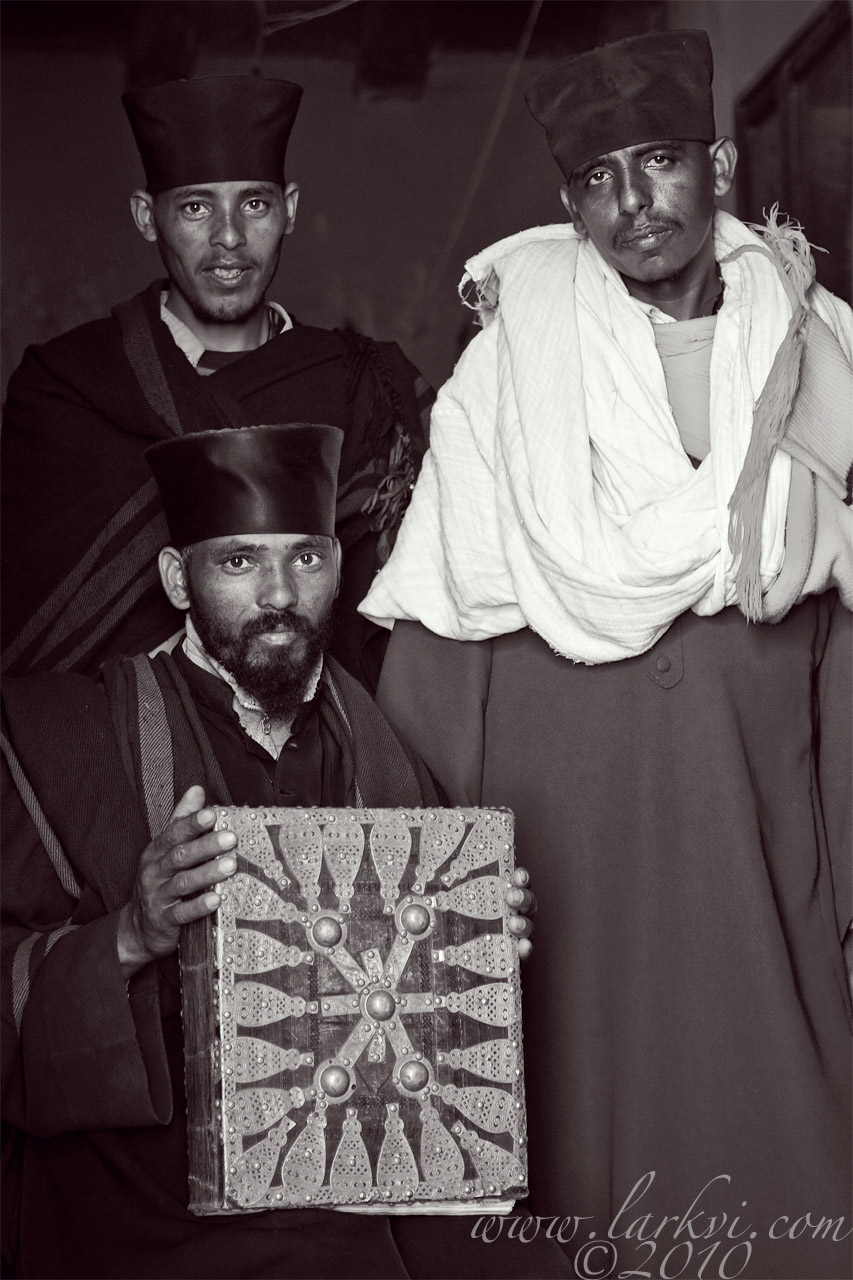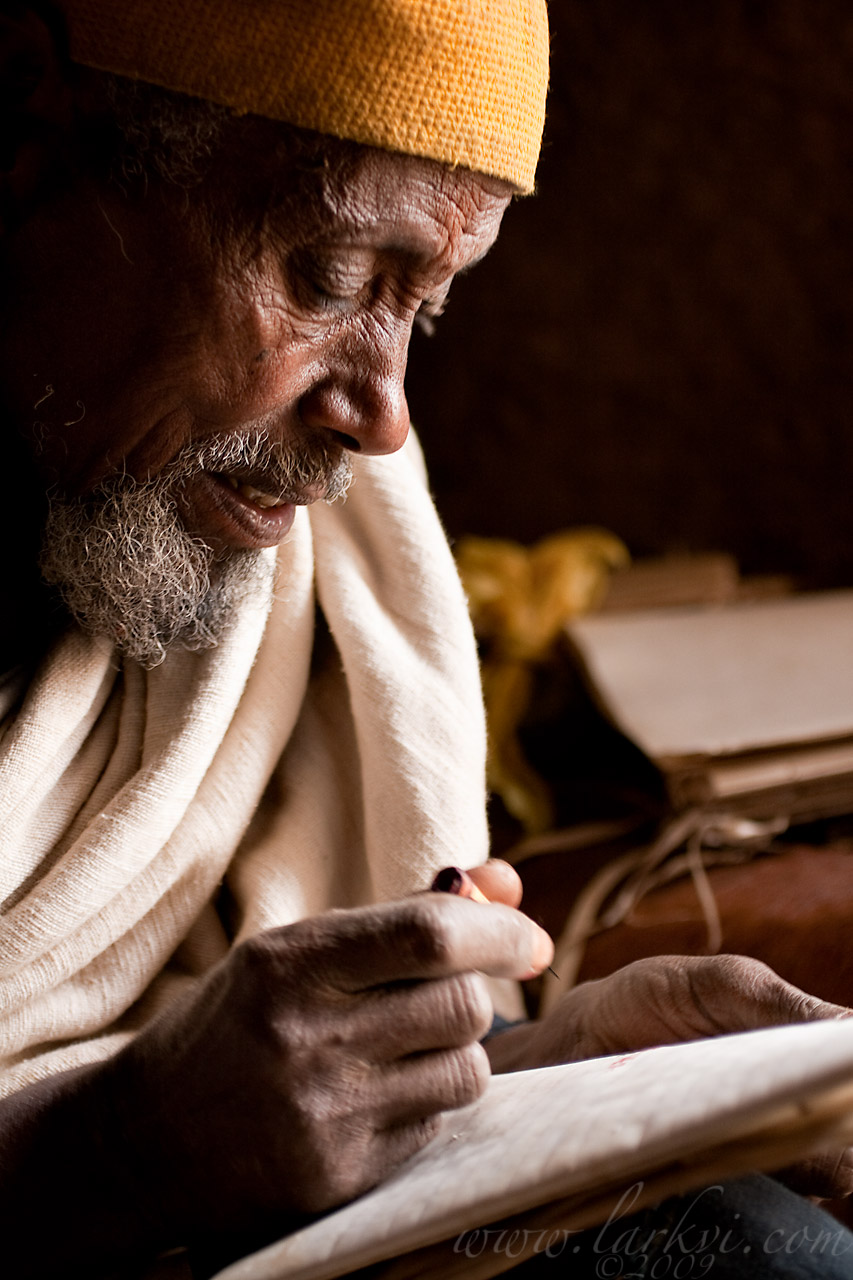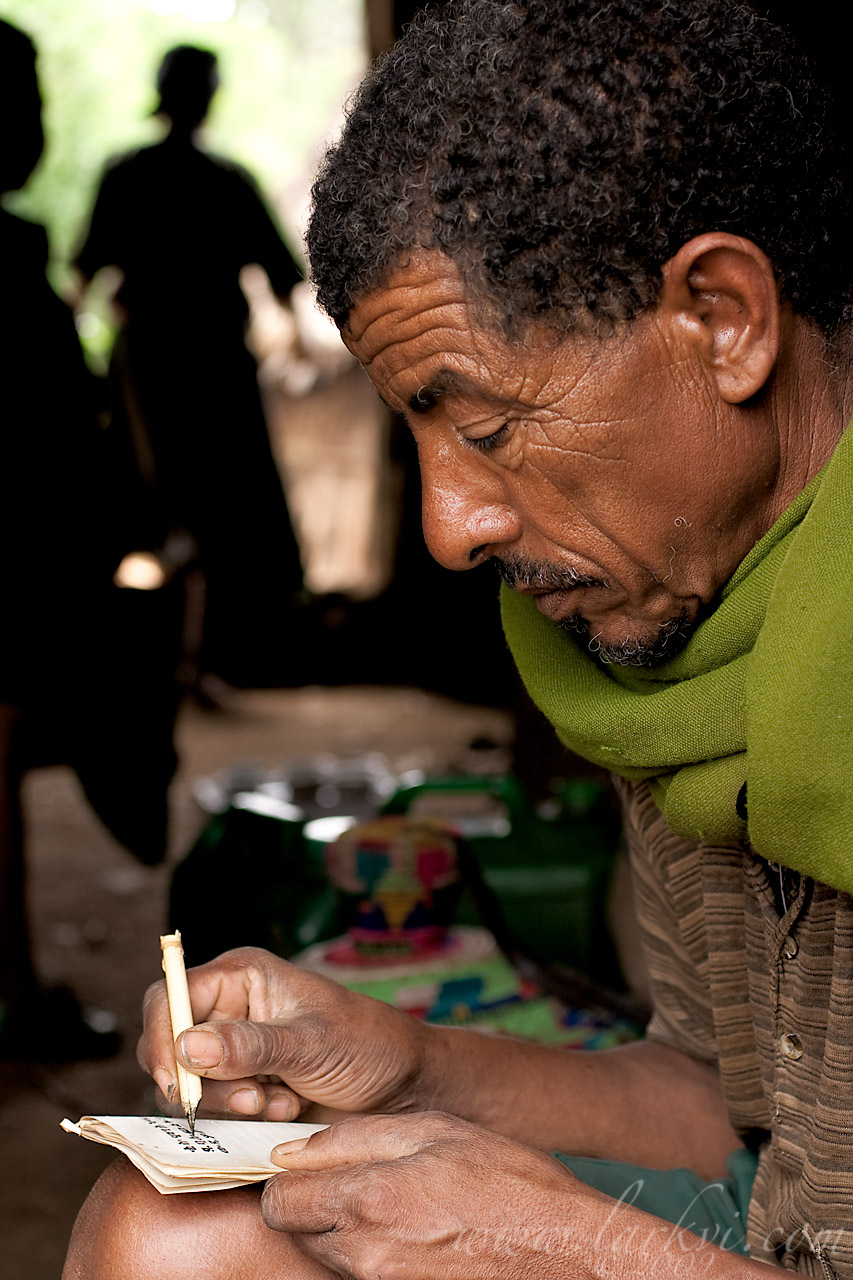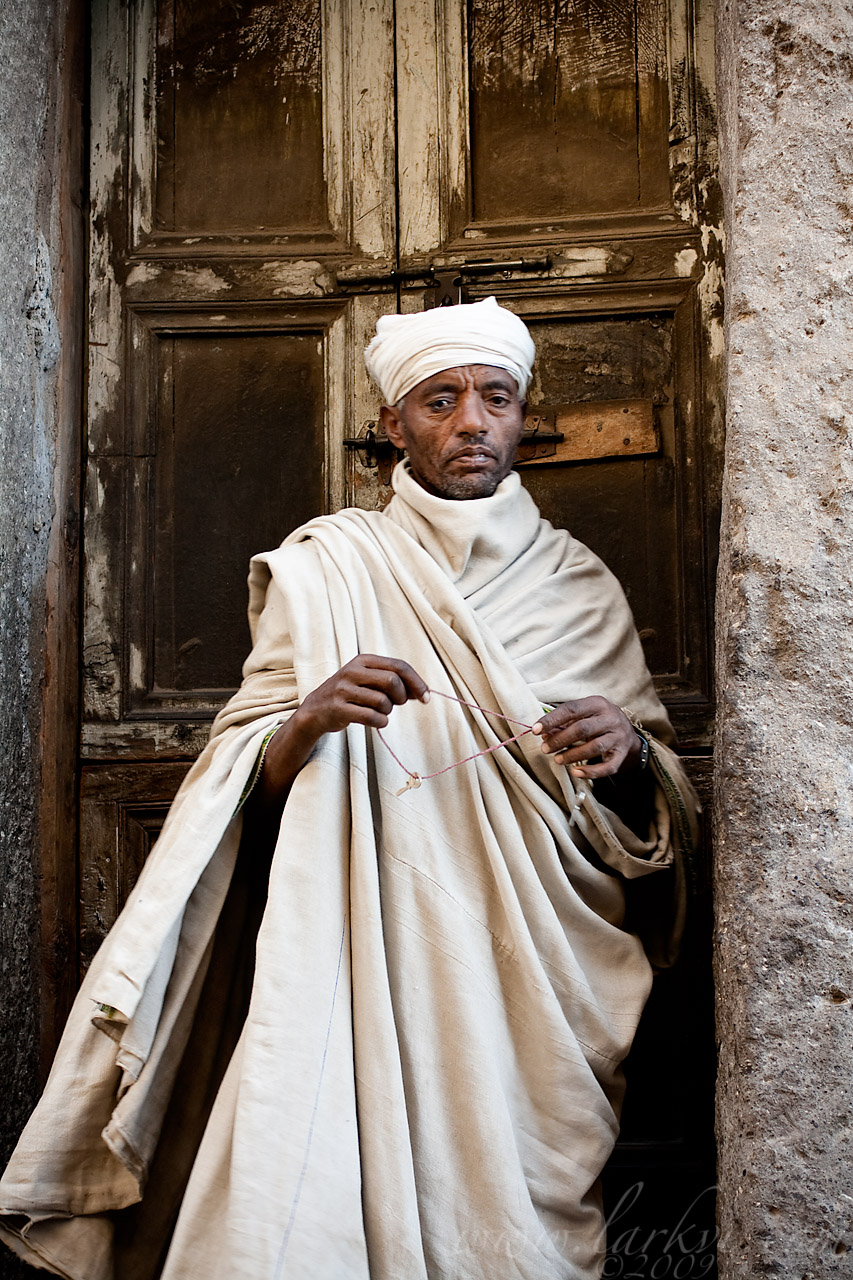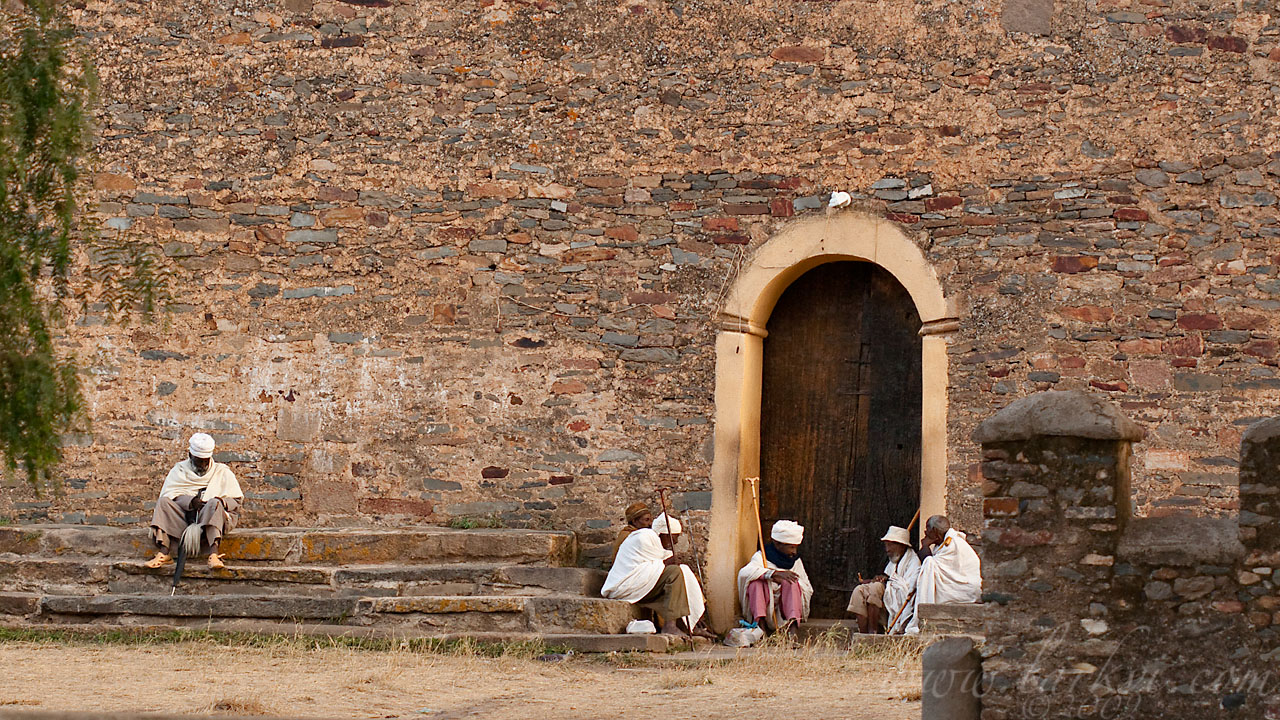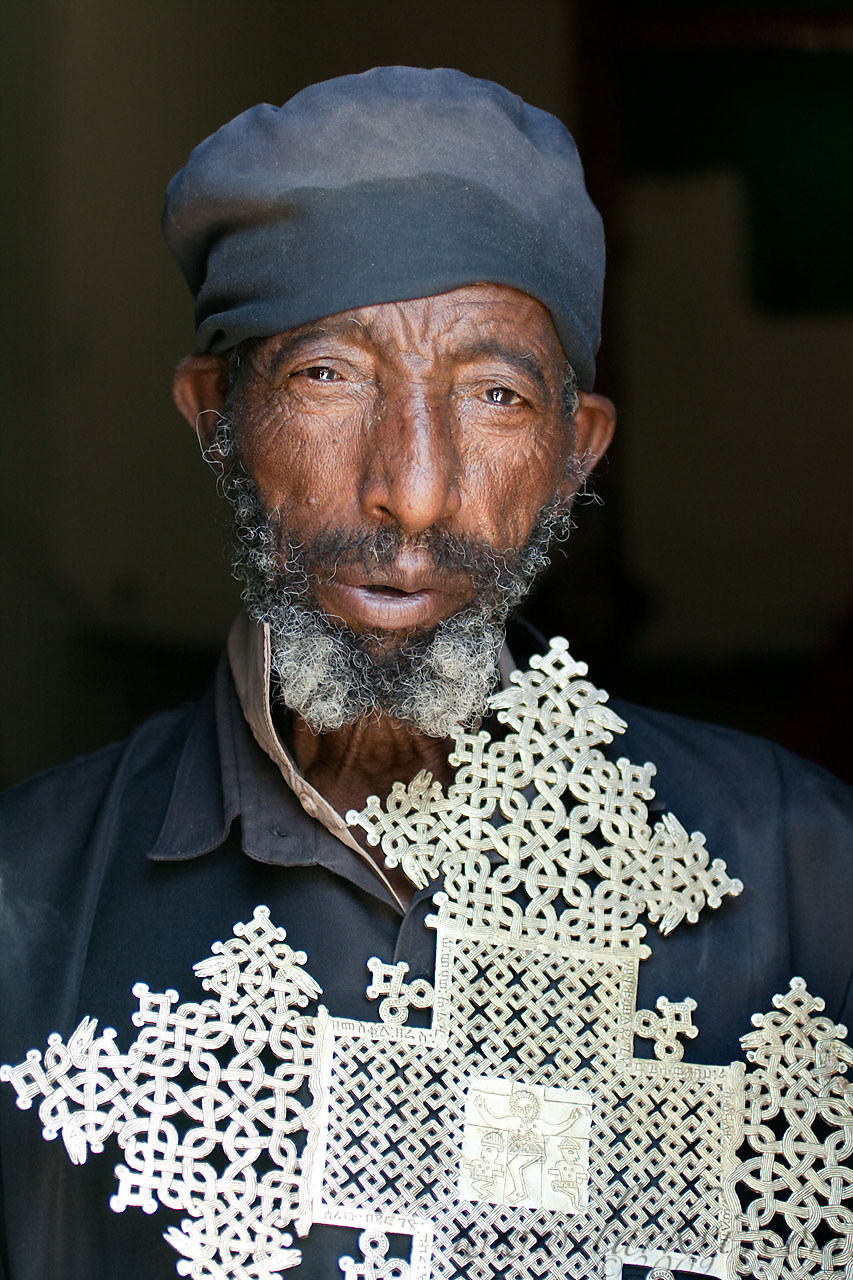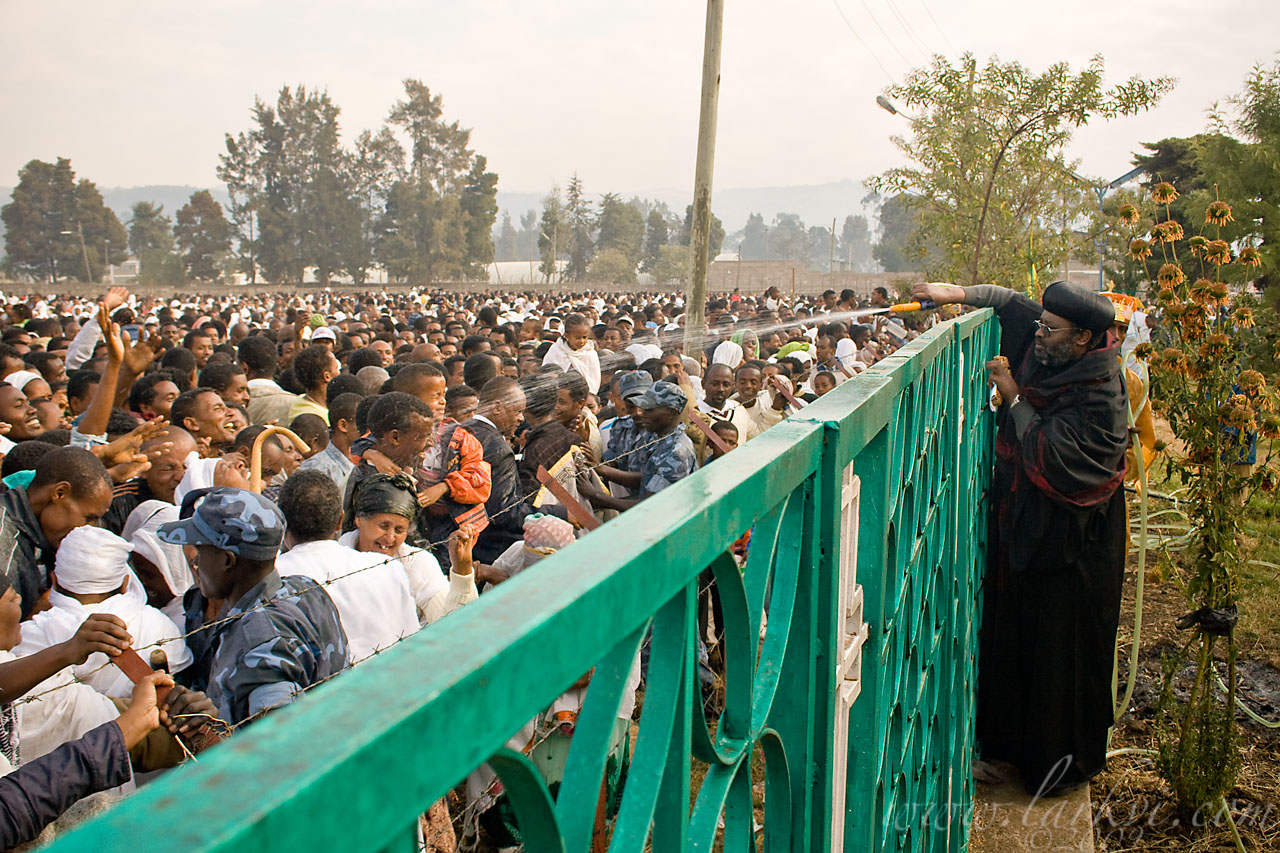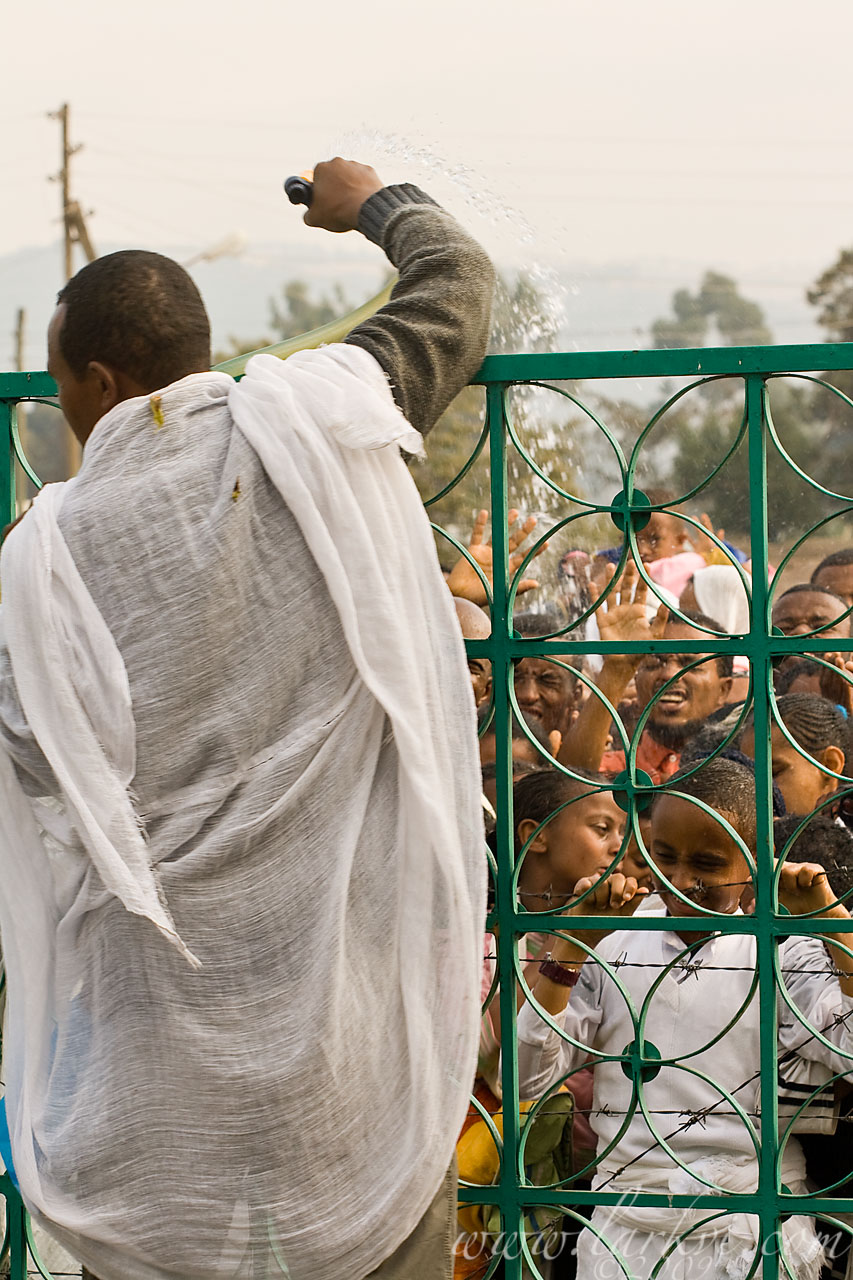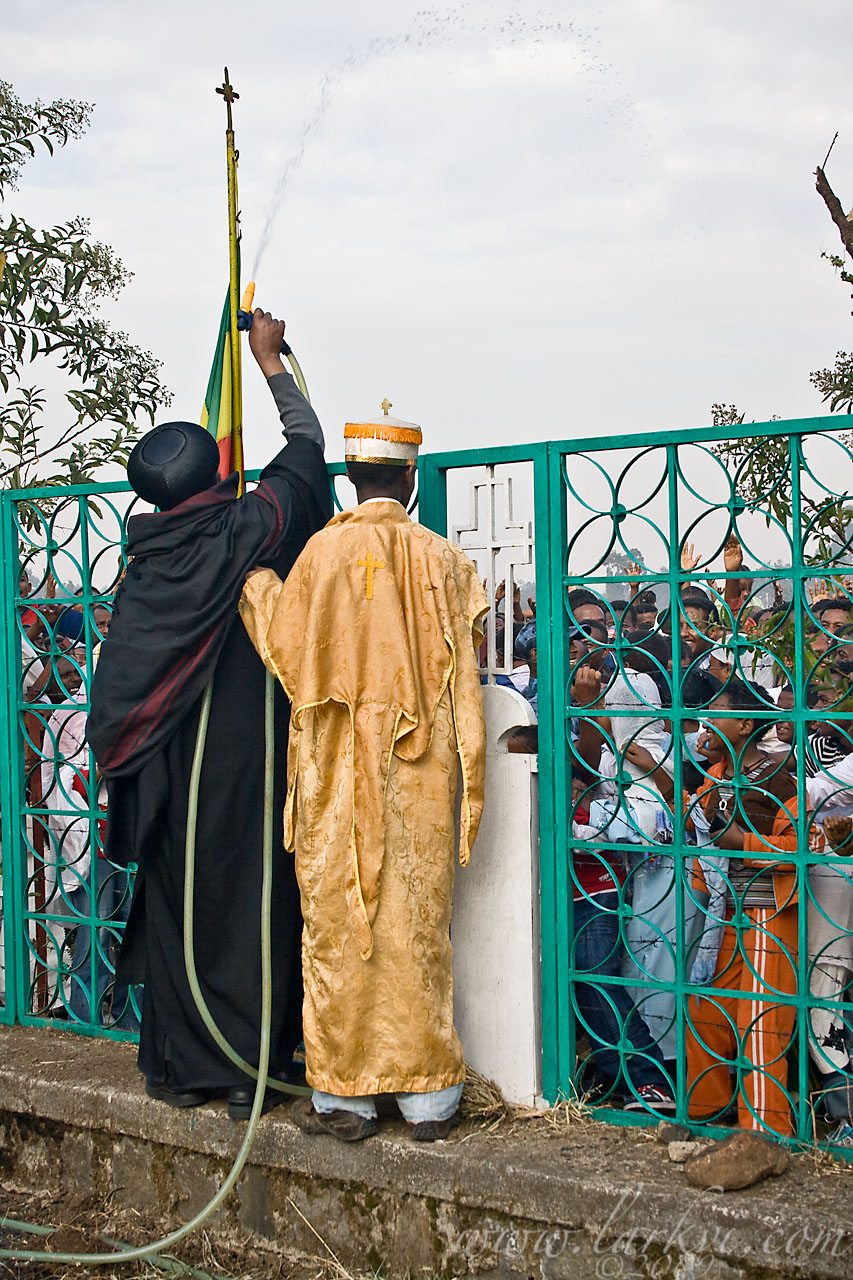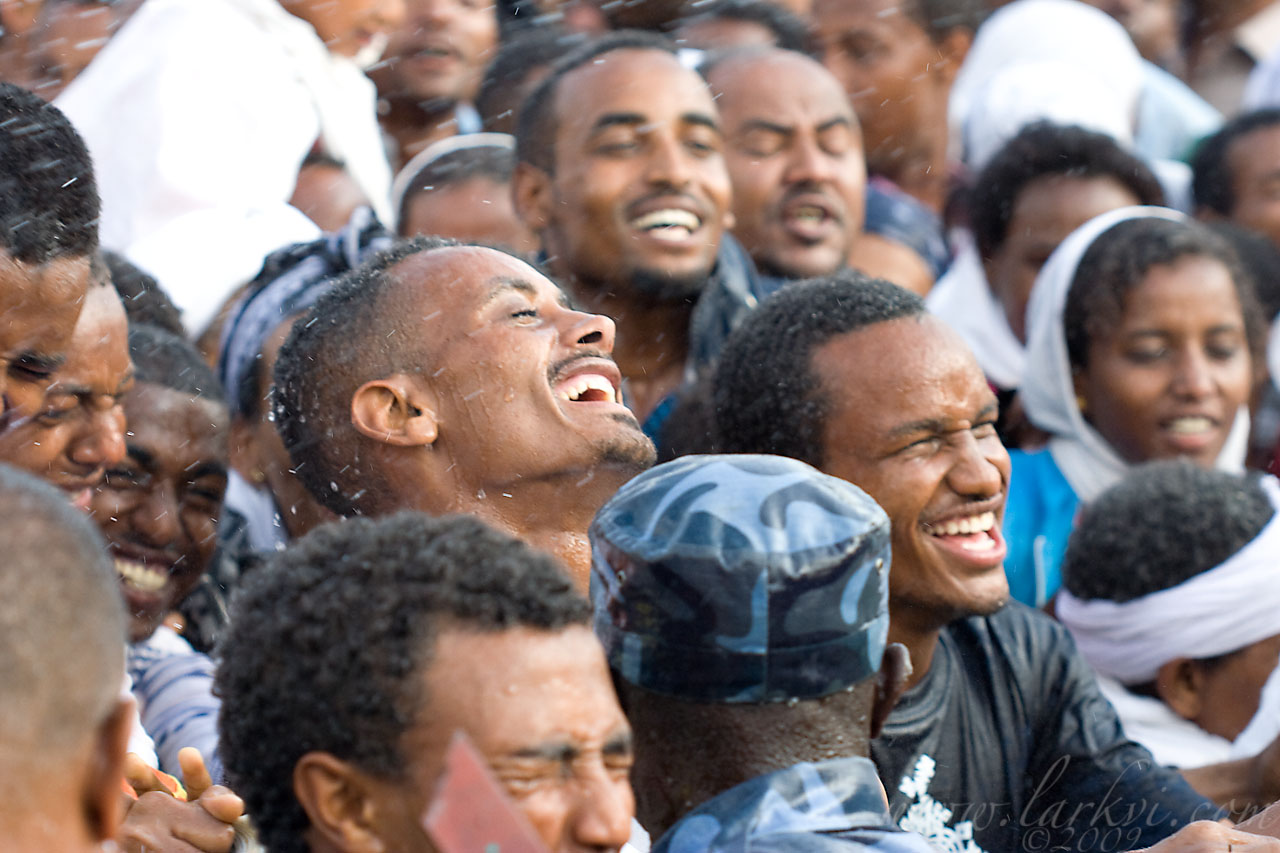Qes Deseta Altah was one of my informants for my dissertation research on Ethiopian scribal production. I took this portrait while meeting with him at his home in Gelawdios, outside of Bahir Dar.
Tag: priest
Treasure-Keepers, Abba Garima Monastery, Tigray, Ethiopia, 2009
Monks at the treasury of Abba Garima Monastery display the treasure-binding of a deluxe manuscript (presumably 17th-18th c.). Abba Garima Monastery is famous as the home of the oldest book in Ethiopia (not pictured), which has been carbon-dated to the 6th century. It is also the home monastery of the current patriarch, Abuna Paulos.
Kes Fente, Gälawdios, Amhara, Ethiopia, July 2009
Liqa Kahunat Ajugu, Gälawdios, Amhara, Ethiopia, July 2009
Kes Mogas, Gälawdios, Amhara, Ethiopia, July 2009
Kes Te’ubo, Lalibela, Lasta, Ethiopia June 2009
Kes Te’ubo is a local administrator and a scribe/illustrator in Lalibela. He makes wonderful, vivid colors out of powdered natural materials, mainly flower petals, roots, and leaves. Here, he is demonstrating his pen-cutting technique on a piece of native bamboo, known as ‘shamboko,’ which is the primary material used for traditional pens in Ethiopia (some other materials are mainly used for magical writing, and there is a tradition that quills were also used in the past.
Interviewing Te’ubo was interesting, as he was arrested on false charges between two of our meetings and thrown into the local lock-up. It was the first time I visited a jail in Ethiopia, though it was the temporary local jail, and not the prison proper. He was let out later that day, and the charges were apparently thrown out by the magistrate, but I briefly thought I would have to finish the interviews in prison.
Priest, Asheten Maryam Church, Lalibela, Ethiopia, june 2009
I have forgotten the name of this gentleman, but he is the priest at Asheten rock-hewn church, on the mountain above Lalibela. Here, he is shown just after locking the door to the church, which we had finished visiting.
When you photograph people in Ethiopia (and, I am told, third-world countries in general) they tend to pose very formally, as portrait-taking is a rare and formal affair for most of them. To get candid portraits, I usually spend a bit of time getting the formal-style portrait, then show them the result on the camera LCD screen, indicating that I got the photo, at which time they will usually get on with what they were doing, and I will attempt candid shots. If they start posing again (common), at this point, a hand gesture will usually be enough to indicate that they should go on with what they were doing; if not, I indulge them by taking another formal-ish shot, re-starting the process. I really like the pose and expression here, just as he turned around from the camera, just before he decided to pose again; I only wish the camera hadn’t ddecided to focus on the door, just behind him. . .
Waiting for services at the Old Church of St. Mary of Zion, Axum, Tigray, Ethiopia, April 2009
Abba Mäsälä, Debrä Genet Medhane Alem, Mek’ele, Tigray, Ethiopia, March 2009
I am in Mek’ele, the capital of Tigray, the Northern province of Ethiopia, interviewing scribes and other manuscript craftsmen. I took the opportunity to visit the treasury of Debrä Genet Medhane Alem monastery, which has a number of deluxe manuscripts presented by Atse (Emperor) Yohannes IV, who brought Mek’ele to prominence by establishing it as his capital (Ethiopia’s capital has changed a number of times). Abba Mäsälä is the treasurer of the monastery, and when he was putting away the books, I asked if I could take a photo of him. He ran upstairs to the treasury, to get his favorite processional cross, before he was ready to pose for a couple quick photos.



